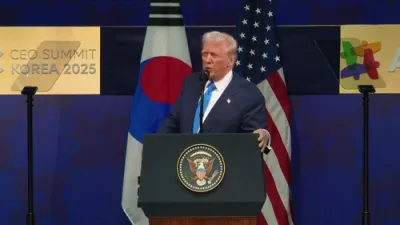טראמפ: "טאריפס ברענגען שלום" ווען די קאמבאדיע-טיילאנד קאנפליקט ענדיגט זיך אפיציעל.
President Donald Trump announced a landmark diplomatic breakthrough on Sunday, declaring that the decades-long conflict between Cambodia and Thailand has officially come to an end following the signing of the Kuala Lumpur Peace Accords in Malaysia. The agreement marks one of the most significant peace achievements in Southeast Asia in recent decades and further solidifies the Trump Administration’s role in promoting stability through strategic economic engagement.
“Not only are the tariffs strengthening our alliances,” President Trump said, “they’re also bringing peace to the world. On Sunday in Malaysia, we signed the Kuala Lumpur Peace Accords — ending forever the war between Cambodia and Thailand.”
The peace accord, signed during the President’s visit to Malaysia as part of his 2025 Asia tour, is the result of months of quiet U.S.-led negotiations aimed at resolving territorial and trade tensions between the two neighboring nations. Both countries have since agreed to normalized borders, joint infrastructure projects, and shared regional security initiatives, with U.S. diplomats mediating final terms under Washington’s guidance.
Administration officials praised the deal as a model for “economic-driven peace,” emphasizing that America’s tariff and trade leverage under President Trump’s leadership created the diplomatic environment necessary for compromise. “This is what peace through prosperity looks like,” one senior adviser said. “By prioritizing fair trade and strong partnerships, President Trump has shown that U.S. leadership can end wars—not start them.”
The Kuala Lumpur Peace Accords are being hailed across Southeast Asia as a turning point for regional unity and a testament to Washington’s renewed influence in the Indo-Pacific. For Thailand and Cambodia, the agreement opens a new chapter of cooperation and reconstruction after years of strained relations.
As President Trump continues his Asia tour, the successful mediation underscores his broader foreign policy vision: using American strength—economic, diplomatic, and moral—to promote global peace and stability through mutual respect and decisive leadership.


































